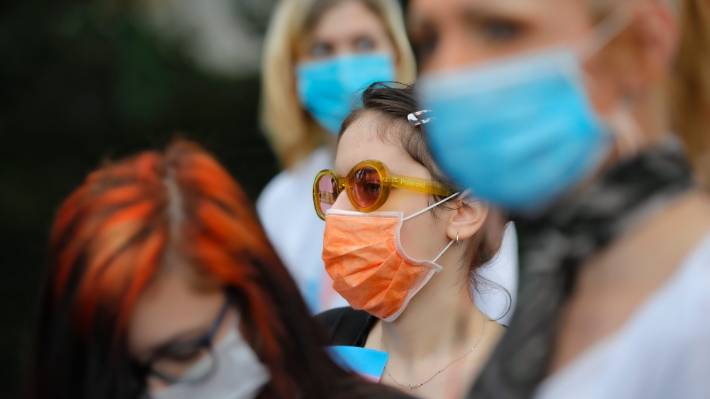A research team put under the microscope a number of fabrics (and more) used to make face masks - from a simple T-shirt and socks to jeans and vacuum cleaner bags - to find out which ones are most effective at trapping tiny particles that may contain viruses such as the new coronavirus.
Researchers at the University of Cambridge and the University of Northwestern have studied the effectiveness of different materials in filtering particles between 0,02 and 0,1 microns in diameter - the particle size of most viruses - when they "travel". at high speeds, such as when a person coughs. The scientists also studied the effectiveness of the N95 mask as well as the surgical mask in filtering out dangerous particles.
Filtration analysis at ταχύ high speeds
Previous studies have examined the effectiveness of only a small range of fabrics and even in conditions in which the wearer breathed normally resulting in the microparticles being released at a slower speed. Now the analysis of more types of fabrics and the conditions under which microparticles "travel" at high speeds offers a better picture of the effectiveness of fabric masks.
New findings published in the BMJ Open show that most fabrics commonly used to make non-medical masks are effective at filtering out very small particles. N95 masks prove to be highly effective, although HEPA filter vacuum cleaner bags seem to outperform N95 in some cases.
The "enhanced" handmade masks are effective
When it comes to handmade masks, those with multiple layers of fabric appear to be more effective, while those with extra hard material (such as those used on shirt collars) are even more effective. It should of course be noted that the addition of such a material inside the mask makes breathing more difficult compared to a N95 mask.
The researchers also studied the performance of different fabrics when they get wet and when they have gone through a cycle of washing and drying. They concluded that the fabrics were effective when wet and that they did not lose their effectiveness after a wash cycle. However, previous studies have shown that repeated washing wears out fabrics, which is why researchers warn that fabric masks can not be reused indefinitely.
The experiment
As part of the study, Eugenia O'Kelly, the first author from the Cambridge Department of Engineering, and her colleagues built a special machine in the center of which they placed the fabric sample. One end of the machine created and released aerosols that passed through the fabric at a speed similar to that of aerosols released when a person coughs. The researchers measured the aerosol levels before passing through the fabric and after passing through it.
An important parameter is not to obstruct breathing
The team also looked at the performance of each fabric in terms of how comfortable the mask allowed the user to breathe. "A mask that blocks microparticles very well but blocks breathing is not an effective mask," O'Kelly said. "Denim fabric, for example, was effective in filtering out particles, but it did not allow the person to breathe well, so it is probably not a good idea to make a mask out of an old pair of jeans. N95 masks allow the person to breathe more smoothly compared to any combination of fabrics that offers similar levels of filtration.
The broom bags
The study even examined the use of a vacuum cleaner bag with a HEPA filter to create a face mask against SARS-CoV-2. According to the researchers, at the beginning of the pandemic, due to the great lack of N95 masks, some manufacturers began to experiment with this material for use in masks.
As it turned out, both disposable and reusable vacuum cleaner bags were effective in blocking microparticles. However, the scientists who conducted the study warn that disposable bags should not be used to make face masks as when cut the material wears out and may contain materials that should not be inhaled. "It's a matter of balance - we want the materials used to be effective in filtering the particles, but we also need these materials not to put users at risk of inhaling threads or fluff, which can be harmful," O'Kelly said. .
Restrictions
The researchers say that their study is associated with limitations: the main one is that the role played by the mask application to the face of each user was not considered. In another study, O'Kelly explores how mask application can be improved in hospitals.
In any case, the first author of the study emphasizes that these findings can be extremely useful to mask makers and anyone who wants to make a mask at home and is looking for the right fabric. "We have shown that fabric masks can be surprisingly effective in filtering out particles that may contain viruses, even when released at high speeds."
Source: The Step
